There’s a new top dog on the Young Adult block. The film adaptation of Veronica Roth’s bestselling YA novel Divergent opened a couple of weeks ago to stellar box office returns. The first in a projected trilogy of movies, Divergent may mark the start of a new killer franchise — or it may just be a way for teen audiences to mark time til the next Hunger Games movie.
Because make no mistake: Katniss Everdeen casts a long shadow across Roth’s literary dystopia. Divergent, like Suzanne Collins’ Hunger Games books, takes place in an ugly future where the lives of young people are treated as disposable commodities. In a postapocalyptic Chicago, society is cloven into five castes, or ”factions.” The peace-loving Amity do the nurturing work of farming; the Erudite, for whom intelligence is the greatest virtue, are planners; the Candor, brought up to be truthful in all things, are the lawyers, and so forth.
The labeling is familiar to kids brought up on Harry Potter. But Divergent adds an element of free will to the game, by introducing lateral mobility across factions. Adolescents undergo a battery of psychological testing to determine which faction suits them best, then formalize their allegiances in a Choosing Ceremony.
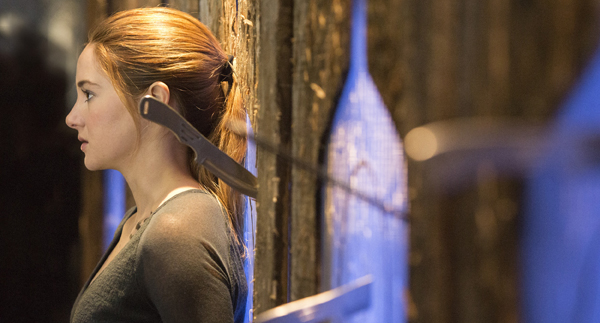
Divergent’s heroine, Tris Prior, has been reared in monastic austerity among the Abnegation, whose perceived lack of self-interest fits them for careers in public service. When testing indicates that she is ”divergent” — that is, she does not neatly fit any predetermined profile — Tris seizes the opportunity to change her fate. Before you can say ”Sorting Hat,” she switches allegiance to the Dauntless, a soldierly faction of fear-nothing daredevils.
As setups go, this is pretty good. The depopulated Chicago makes for an eerie setting. Lake Michigan is reduced to marshy lowland; ancient El trains circle the feral city, never stopping. But most of Divergent is just silly. Instead of any actual insights into the human condition, we get tics — crudely imagined and broadly rendered. (Abnegations only look in the mirror during their quarterly haircut! Nobody likes Candors, because people who always tell the truth are kind of dicks! We know the Dauntless are badass because they dress like Juggalos!)
It scarcely matters. Such thrills as Divergent offers come less from rigorous world-building than from the tried-and-true YA formula of good-looking teens engaging in tepid love triangles in between bouts of ass-whooping. The characterization is thin — which is really saying something, given that each character comes predefined with a single personality trait — and the obligatory teen romance is believable for scarcely a moment. Divergent coasts entirely on the strength of its one big hook.
Let’s be fair, though: That hook is a killer.
Anyone who’s ever had trouble making decisions knows what it’s like to be ”of two minds.” Human consciousness is a strangely fragmented phenomenon; we often feel divided against ourselves, one thought in conversation with another. Walt Whitman was on to something when he wrote his famous lines in Song of Myself:
Do I contradict myself?
Very well then I contradict myself,
(I am large, I contain multitudes.)
Since the beginnings of literature, audiences have ponied up to see those multitudes given flesh. The presentation has changed as our conception of the mind has changed, but we have always been fascinated with aspects of the human psyche devolved into individuals, each embodying a single character trait.
 From the earliest Greek tragedies, we find characters dominated by a single passion which proves their undoing. Aristotle, in his Poetics, identified this as the hamartia, sometimes translated as ”fatal flaw.” But it’s a bit more complex than that. Hamartia derives from a word meaning ”to miss the mark,” indicating that the character’s downfall comes as a result of an error in his judgment — but he is driven to that error by a quirk of personality.
From the earliest Greek tragedies, we find characters dominated by a single passion which proves their undoing. Aristotle, in his Poetics, identified this as the hamartia, sometimes translated as ”fatal flaw.” But it’s a bit more complex than that. Hamartia derives from a word meaning ”to miss the mark,” indicating that the character’s downfall comes as a result of an error in his judgment — but he is driven to that error by a quirk of personality.
In the Antigone of Sophocles, for instance, the ruler Creon sets in motion a fatal chain of events when he refuses to let Antigone bury her dead brother. His decision lacks compassion, but it is motivated by Creon’s rigid adherence to the rule of law. What makes the story tragic is that disaster could have easily been avoided — by anybody other than Creon himself; the makeup of Creon’s character is such that for him, there is no other possible conclusion. To make the ”right” call would mean abandoning the rectitude that is otherwise his greatest merit. The no-win nature of Creon’s situation gives the tragedy its weight. For the Greeks, whose ideal was ”moderation in all things” (turns out we have Aristotle to thank for that one, too), the lesson was plain: To let oneself be prey to one overriding trait — even a virtue — was to court disaster.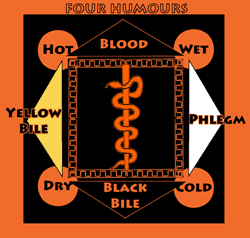
But the concept is ripe for satire, as well. Ben Jonson — a contemporary of Shakespeare — used his 1598 comedy Every Man In His Humour to lampoon the medical thinking of his day. The theory of humours, which held sway from the time of Hippocrates well into the 19th Century, proposed that all health and illness were determined by the balance within the body of four semi-imaginary fluids — blood, black bile, yellow bile, and phlegm — and that these ”humours” also governed personality, causing sanguine, melancholy, choleric, and phlegmatic temperaments, respectively. (This model is amusingly updated within a sci-fi context, in Rupert Thomson’s 2005 novel Divided Kingdom.)
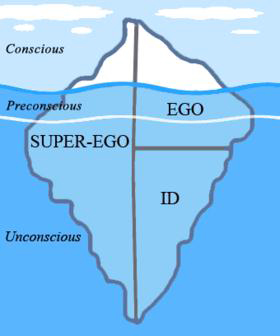 With the 20th Century came advances in the study of the mind — and the notion of complementary personalities. Freud’s tripartite ”structural model” of personality — of the mind divided into the instinctual Id, the morally-evolved Superego, and the pragmatic Ego mediating between them — has been hugely influential . The most famous example (though it was never officially acknowledged by showrunners) would be the interplay between Star Trek’s Kirk, McCoy, and Spock, which maps precisely onto an Ego / Id / Superego framework.
With the 20th Century came advances in the study of the mind — and the notion of complementary personalities. Freud’s tripartite ”structural model” of personality — of the mind divided into the instinctual Id, the morally-evolved Superego, and the pragmatic Ego mediating between them — has been hugely influential . The most famous example (though it was never officially acknowledged by showrunners) would be the interplay between Star Trek’s Kirk, McCoy, and Spock, which maps precisely onto an Ego / Id / Superego framework.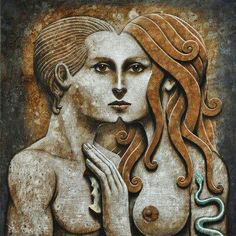
The ideas of Freud’s colleague and rival Carl Jung have arguably had an even wider reach. Jung’s idea of the animus and anima — the complementary masculine and feminine aspects of every human personality — has changed the very face of romance. It used to be we sought a mate who would be our help and partner in the struggle of life; now many of us, consciously or not, are instead seeking the missing pieces of ourselves — someone to make us feel complete.
The conceit of an entire society based on the fragmented self has been rich ground for science fiction long before Veronica Roth came along. Philip K. Dick gave the setup a twist in his 1964 novel Clans of the Alphane Moon. Dick, fascinated by abnormal psychology, imagined an off-world psychiatric facility, abandoned for generations, giving rise to a functional social system wherein each citizen’s mental illness determines his or her career track. Paranoids constitute the statesman class; obsessive-compulsives are the clerks and functionaries; schizophrenics make up the priestly caste, and so on.
Plainly, there are a lot of changes to be rung on this trope. But there’s one work in particular that plays many of the same notes as Roth’s Divergent trilogy — the ”Childe Cycle,” by science fiction master Gordon R. Dickson, a series of six novels beginning in 1959 with Dorsai! and ending (though not really, as we’ll see below) with 1988’s The Chantry Guild.
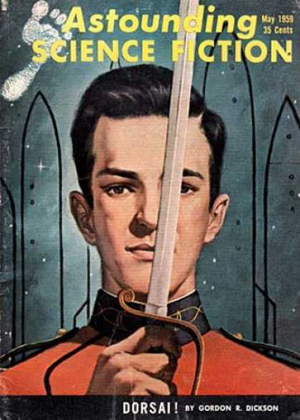 Dickson’s Cycle is epic in both scope and ambition. To make a very long story short: In the far future, mankind has spread out among the stars, and along the way — driven by a collective unconscious urge to improve the race by pushing to extremes — various sociologically- and genetically-distinct ”Splinter Cultures” have arisen, all jockeying for resources and territory. The series centers on three such: the Dorsai, a fearless warrior race; the puritanical Friendlies — fervently, even fanatically religious — who also hire out as mercenaries, though they are mainly treated as cannon fodder; and the Exotics — philosophers, mystics, and psychologists. In the Dorsai general Donal Graeme are found the best aspects of all the Splinter Cultures — courage, faith, and insight — making him a sort of ”intuitive superman,” with paranormal abilities. Graeme must choose between two visions for the future: to use the knowledge of the past to reunite the human race, or to burn the whole thing down and build a new world from the ashes. These heady ideas are rendered in the action-packed, pulpy idiom of military SF.
Dickson’s Cycle is epic in both scope and ambition. To make a very long story short: In the far future, mankind has spread out among the stars, and along the way — driven by a collective unconscious urge to improve the race by pushing to extremes — various sociologically- and genetically-distinct ”Splinter Cultures” have arisen, all jockeying for resources and territory. The series centers on three such: the Dorsai, a fearless warrior race; the puritanical Friendlies — fervently, even fanatically religious — who also hire out as mercenaries, though they are mainly treated as cannon fodder; and the Exotics — philosophers, mystics, and psychologists. In the Dorsai general Donal Graeme are found the best aspects of all the Splinter Cultures — courage, faith, and insight — making him a sort of ”intuitive superman,” with paranormal abilities. Graeme must choose between two visions for the future: to use the knowledge of the past to reunite the human race, or to burn the whole thing down and build a new world from the ashes. These heady ideas are rendered in the action-packed, pulpy idiom of military SF.
The Childe Cycle was to be Dickson’s crowning achievement, a centuries-spanning space opera-slash-allegory, a philosophical meditation on nothing less than what it means to be human. Self-consciously conceived and executed as a Great Work, the series was unfinished upon Dickson’s death in 2001 — and perhaps unfinishable, as it kept growing in Dickson’s imagination. In addition to the six core books, there were several thematically-related stories, and a trilogy of ancillary novels filling in some narrative gaps. As planned, the series would have filled an additional seven books — one to act as a capstone to Dickson’s future history, three set in the present day, and an historical trilogy set in the past — covering a thousand years of history, from the 15th Century to the 25th. Even in truncated form, though, the Cycle is a remarkable work, squaring the circle between Larry Niven’s ”Known Space” series and John Galsworthy’s Forsyte Saga — a self-consistent multigenerational drama set in a richly-imagined future history, replete with timelines and family trees — all the moreso for having been written piecemeal over a period of 40 years.
Dickson — like Roth a midwesterner, born in Edmonton and living his entire adult life in Minnesota — is a paradoxical figure, showing both the reach and the limits of the SF community. He wrote or co-wrote more than 80 books, sold more than 10 million copies worldwide, and won a slew of awards and honors. Yet to the larger reading public he remains a second-tier author, never scoring the crossover name recognition of Isaac Asimov, Arthur C. Clarke, Robert Heinlein, or the aforementioned Niven.
It’s hard to pin down exactly why. Perhaps the ”boy’s own” stigma of mid-century SF held his work back — and to be fair, he never wrote female characters as memorably as, say, Heinlein. And he’s a tough nut politically. His view of a future driven by endless warfare, and his tacit endorsement of the Dorsai’s militarist ethos, seem retrograde; but for all the blood and thunder, Dickson retained an essential humanism. The ideal state towards which humanity was to evolve, the new breed of ”Responsible Man,” has ethical dimensions far removed from ”Might Makes Right.” Aspects of the Childe Cycle foreshadow the Human Potential Movement. Though Dickson frames his themes in terms of European philosophy, it’s not much of a leap to see Responsible Man as a sort of bodhisattva pulling the human species towards an idiosyncratic conception of Enlightenment.
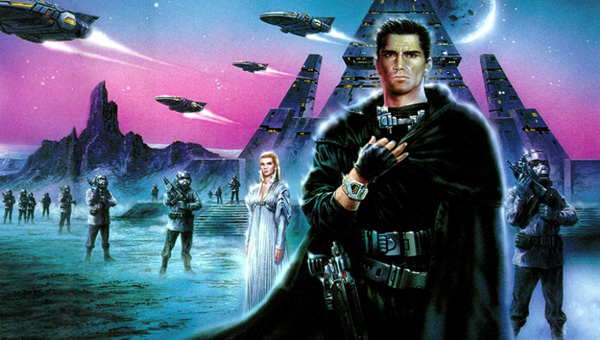
Where Dickson’s vision aligns with Roth’s is in the idea that fragmentation and reintegration of the human psyche is the key to a forward evolutionary leap. There are people that we would think of as ”normal” in both authors’ universes, but they are clearly remnants of the past. The ”full-spectrum humans” of Dickson’s Old Earth remain as a control group in humanity’s grand, unconscious experiment; but they are politically divided, and at an evolutionary dead end. In Roth’s books, those who wash out of the various factions form a wretched underclass. They can be stirred to insurrection by unscrupulous leaders, but their revolution is pyrrhic. Any hopes for a just and peaceful future lie with the Divergent.
In both cases, the message is clearly that it’s no good to merely be a jack of many trades — the next step in human development must be a master of all. That’s not a sci-fi pipe dream; it’s established neuroscience. And the key is something that spiritual types call ”mindfulness.”
What Tris Prior and Donal Graeme both know is that human beings — whatever we might like to believe — are simply not very good at multitasking. We think we’re processing parallel trains of thought simultaneously, but in truth we’re flipping rapidly from one task to another and back again. The executive system in our brains, located in the prefrontal cortex, coordinates the switchover so swiftly that it does not register in our conscious minds. But in an information-dense environment, our alleged multitasking reduces to a self-defeating state that consultant Linda Stone has dubbed ”continuous partial attention” — the appearance of productive engagement, when in truth we’re missing vast swathes of the information that’s coming at us; the executive system gets overwhelmed, and it takes longer and longer to reengage with a task after an interruption.
Gordy Dickson’s ”Splinter Cultures” and Veronica Roth’s ”factions” both represent a mindful approach, taking a single attribute as an organizing principle. Their separateness is a social construct, a function of focus enforced by a shared system of values. By determining early on what sort of people they want to be —by imposing limits on themselves — they are able to filter out everything irrelevant to that goal, and do one thing at a time with absolute mindfulness.
The evolutionary next step is to reintroduce the executive system — to be able to switch from task to task, not in a skimming, superficial way, but always from a state of deep engagement. That is the mark of Roth’s Divergents, and of Dickson’s Responsible Men; to move seamlessly from role to role, fully inhabiting each as they go. Call it Intermittent Absolute Attention. When hungry, eat; when tired, sleep. When you are a fighter, only be a fighter; when you are a thinker, only think. When you pray, only pray. When loving, only love; when giving, only give.
We are large; we contain multitudes. But these fictions of the fragmented psyche, while they skirt darkness and dystopia, carry a hidden, hopeful message of self-actualization. They’re not really about saving civilization, but about saving the self — empowering the executive function to keep those multitudes working in harmony. And coming apart is a necessary step in discovering what it takes to get it all together.






Comments